

Carl Barks produced many more paintings than generally
believed! It is not unusual for some painting artists to produce series of smaller paintings with the purpose of trying out certain ideas,
colourings, and compositions, but those studies are rarely published - or
publishable for that matter. A painting artist generally likes to be thought of
as more or less infallible, so only finished and approved works find their way
to the public.
Fans and connoisseurs of Barks' paintings - especially the Disney duck ones! -
know his official paintings and this is to some extent also true when it comes
to his non-Disney paintings. This website has several pages covering these
vast groups of material (see
The Paintings and
The Painting Payments as examples), and you can also find several pages on this
website
showing how Barks worked on his paintings.
During the Disney painting years Barks made several almost identical series of
paintings, where the main differences lie with alternating background colours.
Well known examples are his artwork featuring the Money Lake, Ancient Persia,
and Bullet Valley, but there is a category of genuine practice paintings
as well. This page presents you to some of these studies that Barks never
booked, numbered, or titled.
It lies, of course, within the concept that not many of these practice paintings
have ever come to the public's attention, but you are now presented to all the
known 7 miniature practice paintings Barks made of Scrooge McDuck during his Disney
painting inception.
|
THE INCEPTION |
|
In 1971, when Barks obtained his first licence from The Walt Disney Company to produce duck oil paintings, he 'warmed up' by painting a handful of small oils featuring a stern looking Uncle Scrooge grasping a bag of money. These small portraits primarily served as pure practice paintings enabling Barks to decide on how to deal with a number of details and potential problems.
Board:
Colour:
Character appearance: |
|
THE MINIATURES |
||
|
Below you are presented to 2 sketches as well as all 7 experimental and unbooked, uncoded, and untitled
Scrooge miniatures that
were quickly done and given away to
friends and business partners such as Donald Ault (Barks expert),
Michael Barrier (Barks biographer), and George Sherman (furnisher of the license to paint the Disney ducks). The miniatures
were done on Masonite and they are
all sized 5x7" (125x180mms). |
||
|
|
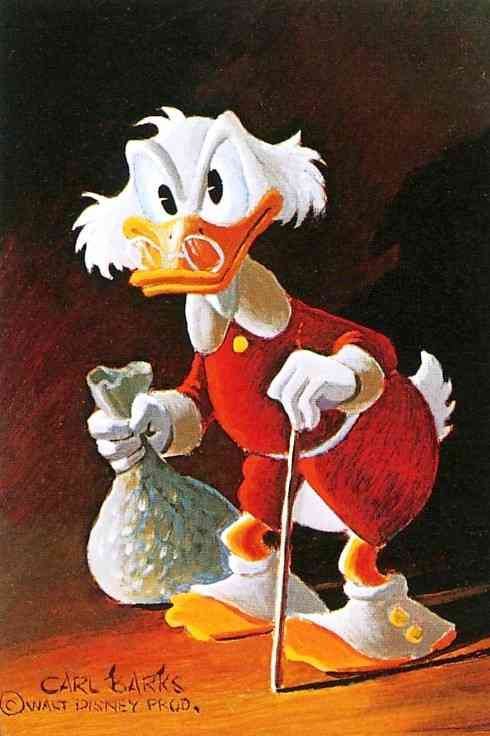 1971 |
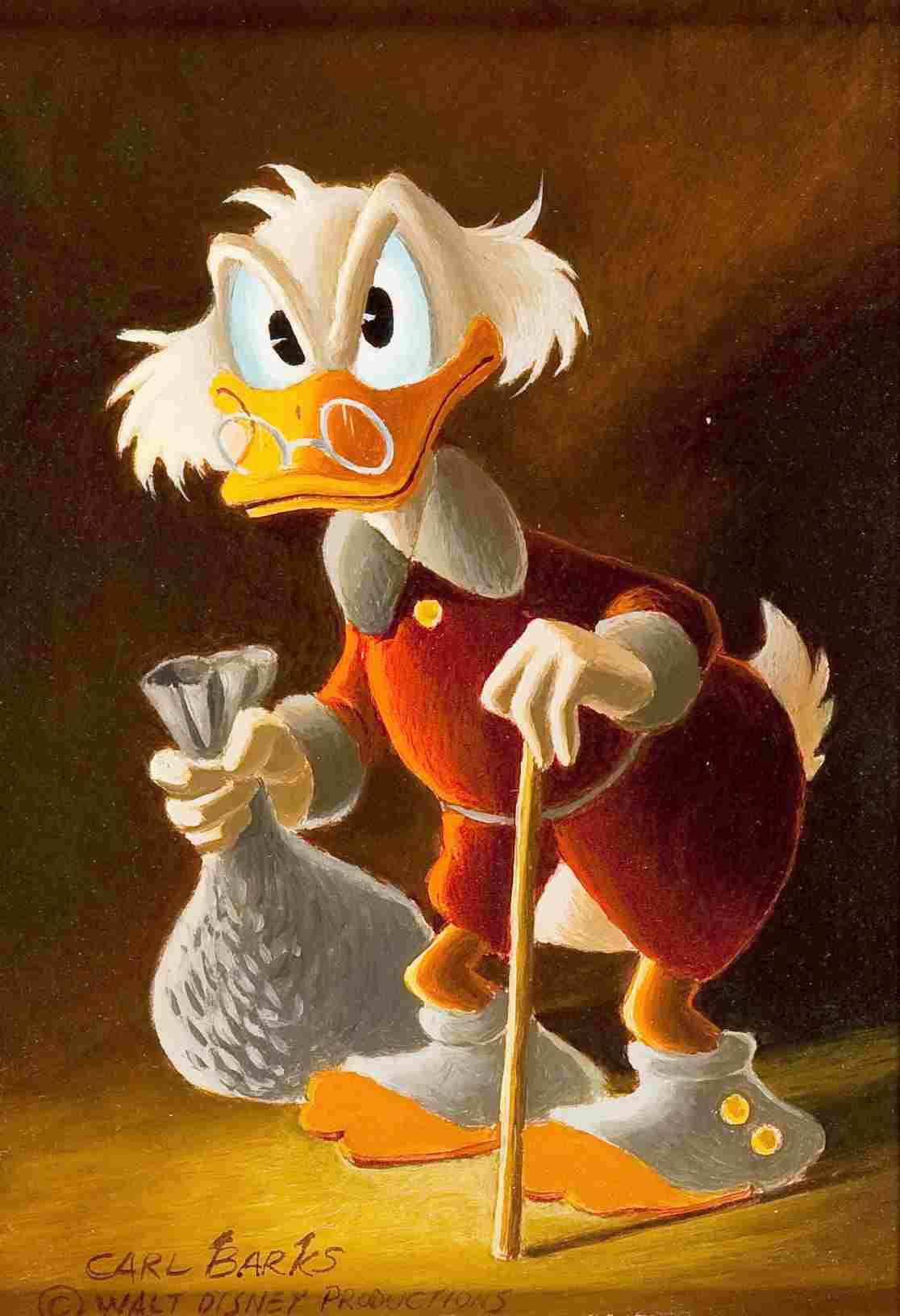 1971 |
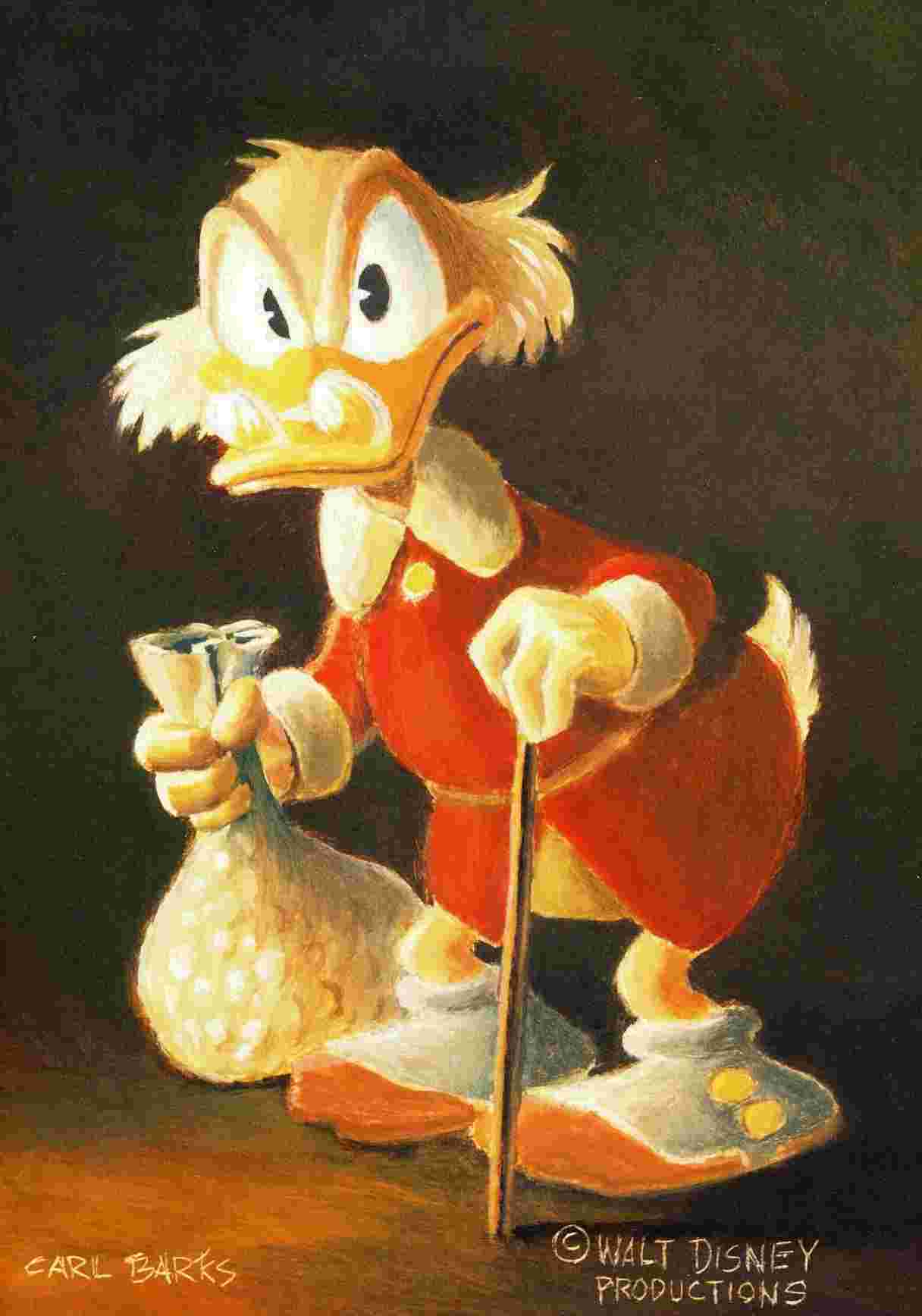 1971 |
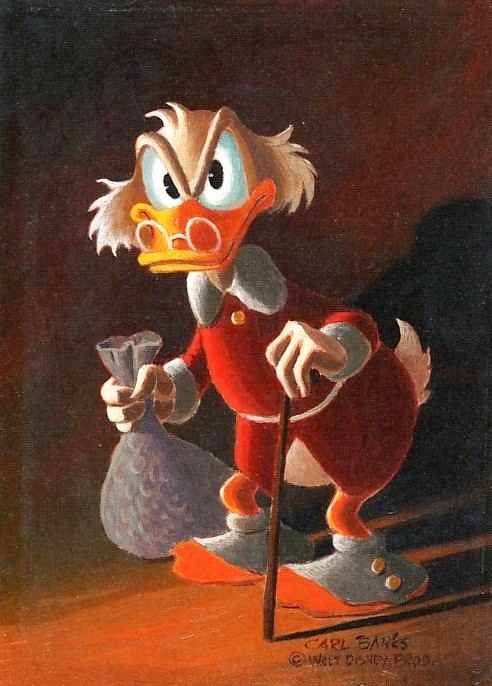 1971 |
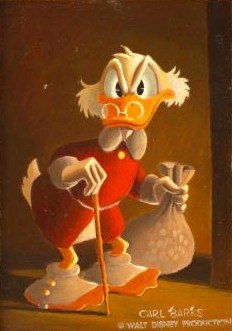 1972 |
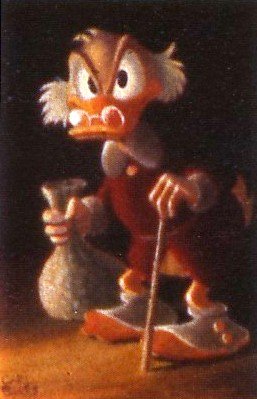 1972 |
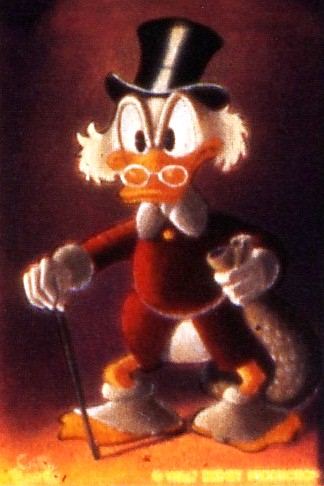 1972 |
|
|
|
http://www.cbarks.dk/THEMINIATUREPAINTINGS.htm |
Date 2017-05-11 |